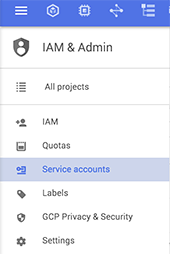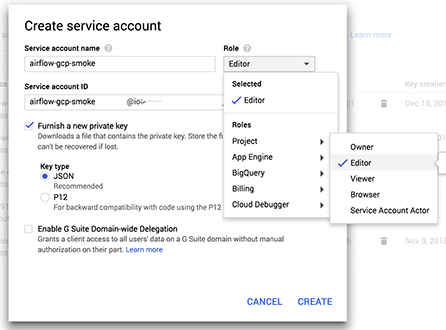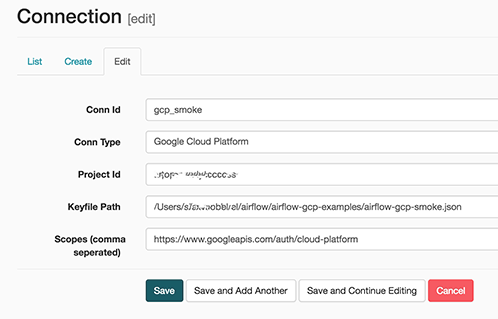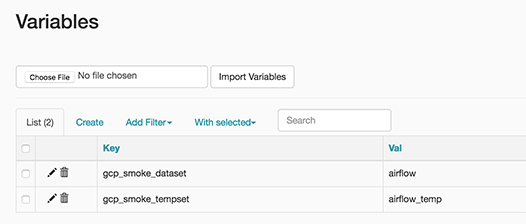Repository with examples and smoke tests for the GCP Airflow operators and hooks.
This Google Cloud Examples does assume you will have a standard Airflow setup up and running. This tutorial does work perfectly locally as in a production setup because the only requirement is that you have a service key, that we'll explain next. But first a quick rundown of what you need:
- Running Airflow (as of this writing you need Airflow master branch!!!)
- Create a service account (Cloud Console)
- Setup a Google Cloud Connection in Airflow
- Setup variables that the DAG's will need
- Copy the DAG's to your dags folder
- Checkout master of Airflow
- pip install google-api-python-client
- python setup.py install
Make sure you're running the LocalExecutor and have a decent database setup.
Next create a service account where you want your smoke tests and examples to run in. Go to the console:
And create a service key. Provision a JSON private key and give it Editor's rights
In Airflow you need to define the gcp_smoke named connection to your project:
Supply the path to the downloaded private key, supply the project_id and define the minimum scope of https://www.googleapis.com/auth/cloud-platform
You need to setup variables that are used in the examples. You can tweak them to suite your environment.
| variable | example value | note |
|---|---|---|
| gc_project | my-project | Project where the examples will run in |
| gcq_dataset | airflow | BigQuery dataset for examples |
| gcq_tempset | airflow_temp | BiqQuery dataset with 1 day retentions |
| gcs_bucket | airflow-gcp-smoke | Storage bucket |
| gcs_root | data | Storage root path (required, no start and end with slash) |



